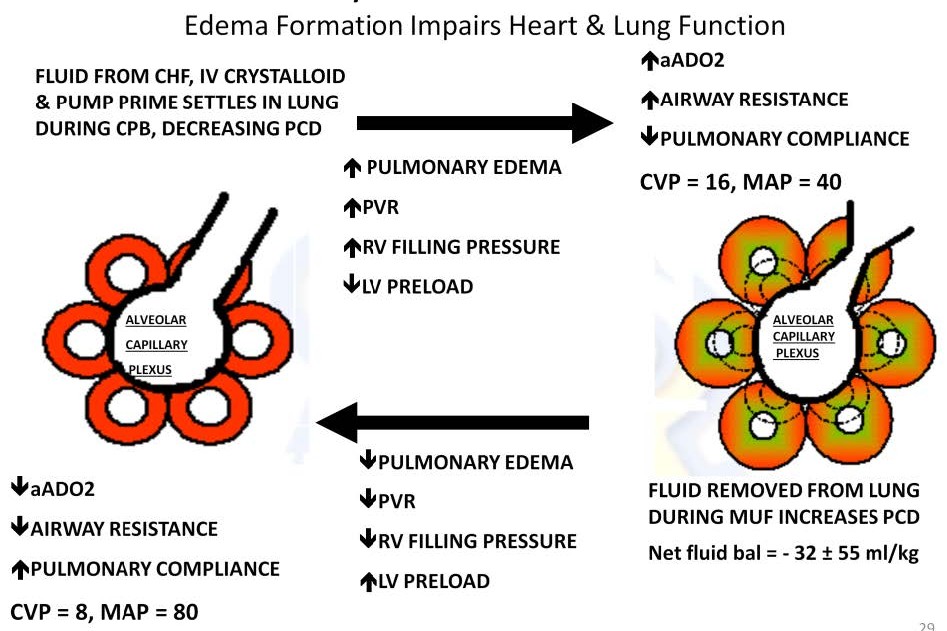
Edema in the pulmonary system can also result in a decreased PCD that moves the capillaries away from gas exchange near the lung alveoli and increases the vascular resistance to blood flow. This commonly occurs during cardiopulmonary bypass at a time when the lungs do not receive adequate perfusion via the pulmonary artery.
Interstitial edema increases pulmonary vascular resistance, right ventricular filling pressures and impairs right heart function. This is followed by a reduced left ventricular preload and subsequent fall in cardiac output. Commonly the treatment is to administer additional fluid to boost right heart output. This may provide temporary improvement in the cardiac output, but the additional fluid can worsen the pulmonary edema as well. In this example, an infant weans from CPB with a central venous pressure of 16 mmHg and a mean blood pressure of 40 mmHg. The airway is also compromised by reduced pulmonary compliance, increased airway resistance and increased oxygen requirements (increased aADO2) to achieve an adequate arterial oxygen saturation.
Combating the edema with targeted ultrafiltration can quickly reduce the pulmonary edema and restore normal pulmonary circulation and function. MUF removes an average of 32 ml/kg of fluid from infants, in our experience. This is a significant amount of fluid considering that the blood volume of an infant is only about 100 ml/kg. But since much of the fluid removed comes from the edematous lungs and peripheral tissues, cardiac function actually improves despite the net fluid removal.
Continuing with this example, the central venous pressure falls to 8 mmHg as fluid is removed and the mean arterial pressure increases to 80 mmHg. The drop in CVP is not just indicative the fluid removed, but is rather a reflection of the improved right heart function due to the reduced pulmonary edema. As right heart function improves, left heart preload improves resulting in an increase in blood pressure.

Perfusion Theory is an educational platform for the Oxygen Pressure Field Theory (OPFT). August Krogh’s theoretical concept of the oxygen pressure field is explained and then applied to clinical applications in perfusion practice.